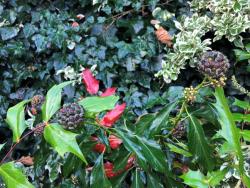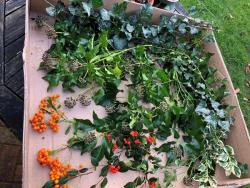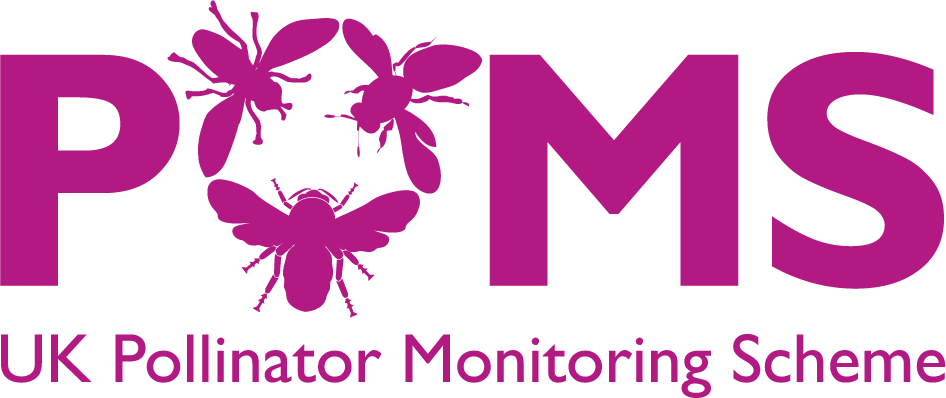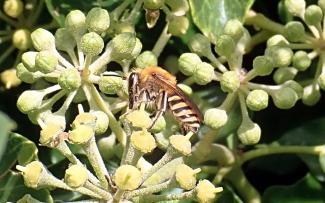PoMS reflections, five years in!
As we approach Christmas and the end of the UK Pollinator Monitoring Scheme’s fifth survey year, it seems worth reflecting not just on where we have got to with this years’ samples and survey data (more below), but on our collective achievements to date.
During its first four years PoMS generated 3,355 Flower-Insect Timed Counts from at least 500 unique site locations across the UK, representing nearly 560 hours of survey time and including a total of 35,813 insects! In addition, a total of 596 survey visits were conducted across the 75 PoMS 1 km squares, with trained volunteers covering two thirds of this extensive national site network. By the end of the 2020 survey season, the number of recorded bee and hoverfly species from the pan traps had reached 216. As well as gaining valuable insights into the changes in species richness and abundance of key pollinator groups between years, PoMS surveys have also extended the known ranges of some less well-recorded species. We are incredibly grateful to everyone who has given their support and enthusiasm to the scheme, from the core team of partners and funders to the hundreds of volunteers submitting data, the taxonomists behind the scenes and landowners allowing access for the 1 km surveys. Thank you all!
While 2020 was a challenging year in so many respects, reduced survey activity on the PoMS 1 km squares allowed us the time and funds to design and launch both the new PoMS website and FIT Count app. The app took off in April 2021 and has already generated around 2,100 FIT Counts from across the UK, as well as pilot counts from further afield. Together with more than 1,000 counts entered via the website and 516 from the 1 km survey squares, this means 2021 is looking like a record year in terms of number of FIT Counts submitted to the scheme! Note that the data are yet to be fully verified, so these numbers are subject to change. We were also able to produce a new series of live graphics to help visualise the FIT Count data. These show the wonderful diversity of insect groups visiting each target flower, but also how they vary considerably with, for example, Buttercup, Hogweed and Ragwort attracting high proportions of hoverflies and other flies, and Knapweeds, Lavender and White dead-nettle being visited more by the bees. While the charts are currently showing counts from across the UK, we hope to be able to develop regional or seasonal versions to explore further variations in the FIT Count data.
2021 has been another great year for the 1 km surveys. Nadine has incredibly completed the initial sorting of 1,179 pan trap samples, from which nearly 4,000 bee and hoverfly specimens have been passed on to our expert taxonomists for identification to species level. Following this, we will carry out our annual “QA” checks in early 2022 to ensure that any tricky species or spurious records are identified and cross-checked, before Martin exports the data from all surveys for Francesca to begin on the modelling.
PoMS findings are presented in detail in our 4-year final report, due to be published soon alongside the raw data from all UKPoMS surveys between 2017-2020, and in the 5-year analyses which will follow once all the 2021 data are in. Please do make sure that information from all 1 km survey forms has been transferred to the new website, since we cannot add species to a ‘missing’ survey, and are keen to include all your hard-earned data. If you’d like to see more of the research publications emerging from PoMS then head to the PoMS research pages.
That is enough numbers for now! With my work having been so focussed towards applied ecology and one to three-year research grants (mostly on bumblebees) up until I took on PoMS, it is also immensely satisfying to be part of a bigger whole, of a network of like-minded people all striving to observe and record our precious pollinators (and more) and to better understand their changing fortunes. The UK hosts such a wealth of fantastic biodiversity monitoring schemes that help underpin policies to protect and enhance our natural world, as well as providing opportunities for skilled and dedicated volunteer recorders to contribute: from the many species recording schemes and societies (e.g. BWARS) to the long-running Butterfly Monitoring Scheme and BTO’s Breeding Bird Survey, and the more recent bumblebee BeeWalks and National Plant Monitoring Scheme. We are delighted to see PoMS featuring amongst these ‘greats’ and to be engaging with colleagues across the globe following the recent addition of the FIT Count app.
We very much hope to have a Newsletter available before the 2022 season begins, and to be bringing you updates on other elements of how PoMS will be going forward into its sixth year.
And finally as we approach Christmas and the decorations are well and truly up, it is always good to remember and appreciate the pollinators that have provided us with beautiful berries and sparkling frosty seed heads. Head over to Jeff Ollerton’s blog about Holly and Mistletoe for more. I certainly enjoyed a few late season FIT Counts on Ivy this year and the berries on my garden fence are looking fabulous from all the flies, wasps and Ivy Bees that have come before!
Wishing all of my PoMS team colleagues, our volunteers and followers a very happy Christmas and a healthy and peaceful new year.
Claire Carvell, December 2021

Ivy berries with Mahonia behind (already attracting Buff-tailed Bumblebee in mid-December!) |

This years’ wreath-making harvest from the garden |



